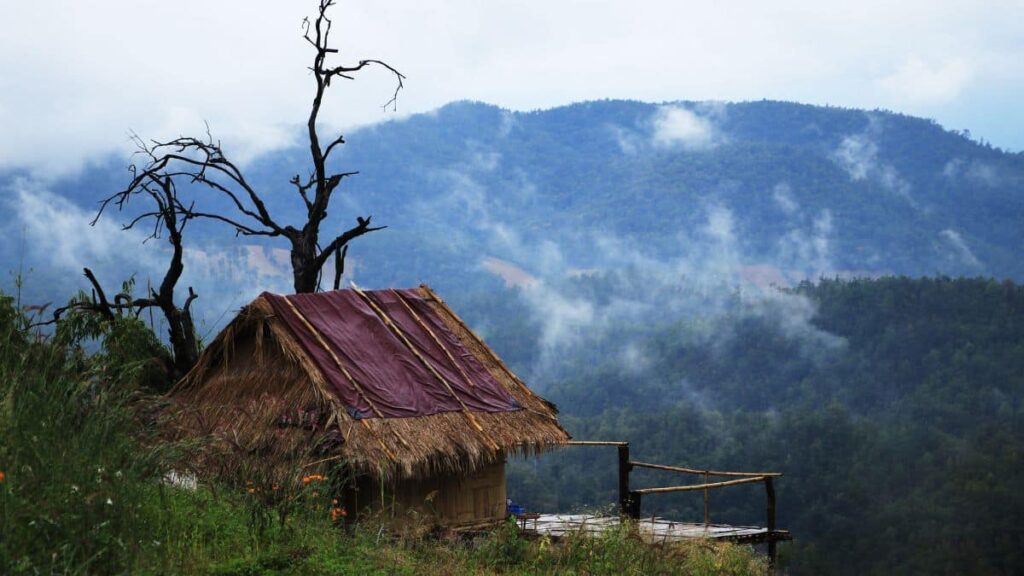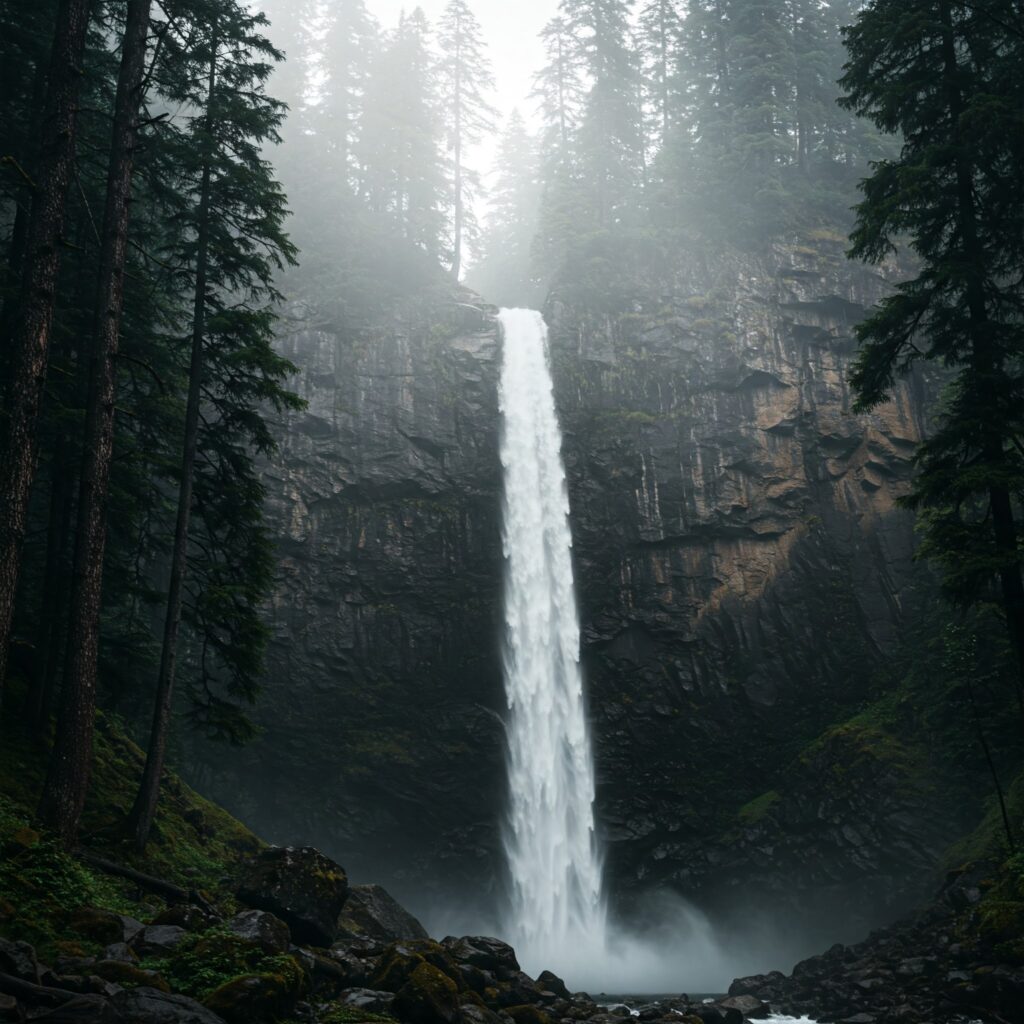Places to Visit in Himachal Pradesh 2025, trekking, stays, food, culture, planning & more for your 2025 trip to this Himalayan hidden gem.
- Places to Visit in Himachal Pradesh
- 1. Why Choose Jibhi? The Magnetic Allure of Himachal's Hidden Gem
- 2. Jibhi's Natural Tapestry: Diving Deep into Landscapes, Rivers, and Forests
- 3. Thrills in Tranquility: Adventure Activities In and Around Jibhi
- 4. Cultural Immersion: Experiencing Jibhi's Rich Heritage and Traditions
- 5. Where to Stay in Jibhi: From Cozy Homestays to Enchanting Treehouses
- 6. A Culinary Journey: Tasting the Authentic Flavors of Jibhi and Himachali Cuisine
- 7. Planning Your Jibhi Escape: Practical Information for 2025
- 8. Air Quality in Jibhi: Breathing the Himalayan Freshness
- 9. Beyond Jibhi: Exploring the Wider Tirthan Valley and Nearby Areas
- 10. Conclusion: Jibhi – An Enduring Himalayan Melody
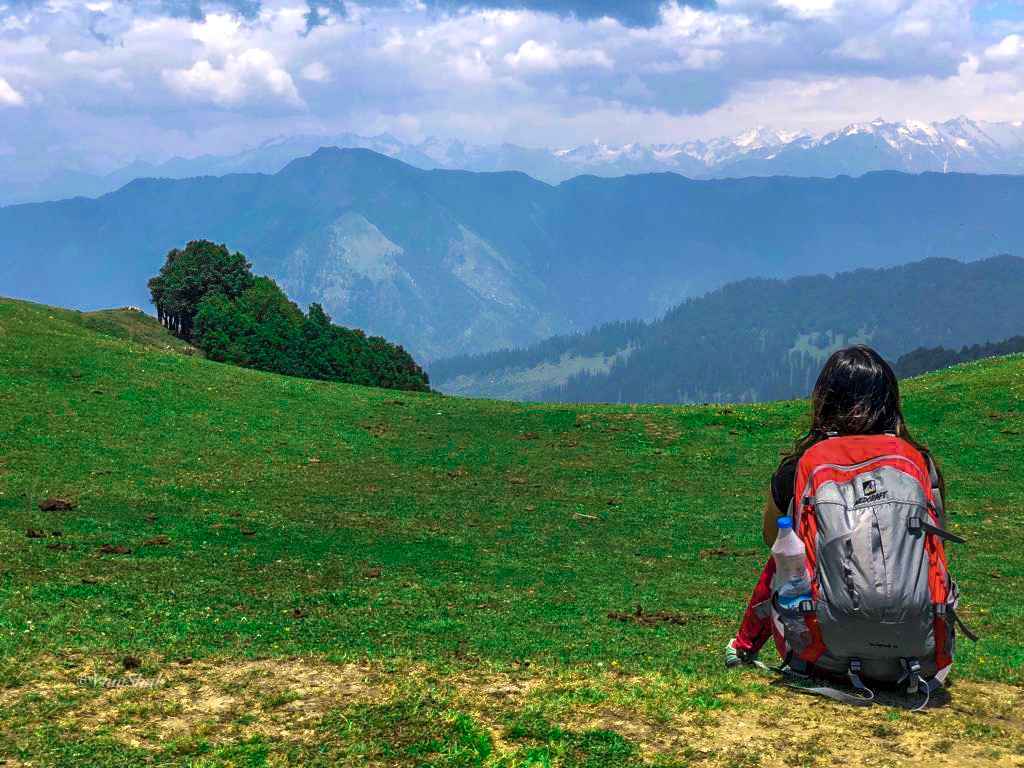
Places to Visit in Himachal Pradesh
Tired of the relentless pace of city life? Do you dream of waking up to the sound of a gurgling river, breathing crisp mountain air, and gazing upon endless stretches of emerald forests and snow-dusted peaks? If your soul craves tranquility, authentic experiences, and a deep connection with nature, then allow us to introduce you to Jibhi – a hidden jewel sparkling in the crown of Himachal Pradesh.
Himachal Pradesh, the “Land of Snow,” is renowned for its dramatic landscapes, stretching from the foothills of the Shivaliks to the high-altitude deserts bordering Tibet. It’s a tapestry woven with threads of spirituality, adventure, and vibrant culture.
From the colonial echoes in Shimla and Dalhousie to the Tibetan aura of Dharamshala and McLeod Ganj, the apple orchards of Kinnaur, the challenging terrains of Spiti, and the vibrant valleys of Kullu and Kangra – Himachal offers myriad experiences. Yet, tucked away from the spotlight, lies Jibhi, offering a unique blend of accessibility and seclusion, comfort and wilderness.
Nestled gracefully within the breathtaking Tirthan Valley, often referred to as Himachal’s ‘best-kept secret,’ Jibhi is more than just a destination; it’s an escape, an experience, a feeling. Unlike its bustling cousins like Shimla or Manali, Jibhi retains an old-world charm, a slower rhythm of life, and an untouched beauty that captivates travellers seeking solace and adventure away from the mainstream tourist trails.
Whether you are a solo traveller seeking introspection, a couple looking for a romantic Himalayan getaway, a family wanting to introduce children to the joys of nature, an avid trekker yearning for new trails, or a cultural enthusiast eager to experience authentic mountain life, Jibhi beckons. Prepare to be enchanted by its simplicity, rejuvenated by its serenity, and inspired by its timeless beauty.
1. Why Choose Jibhi? The Magnetic Allure of Himachal’s Hidden Gem
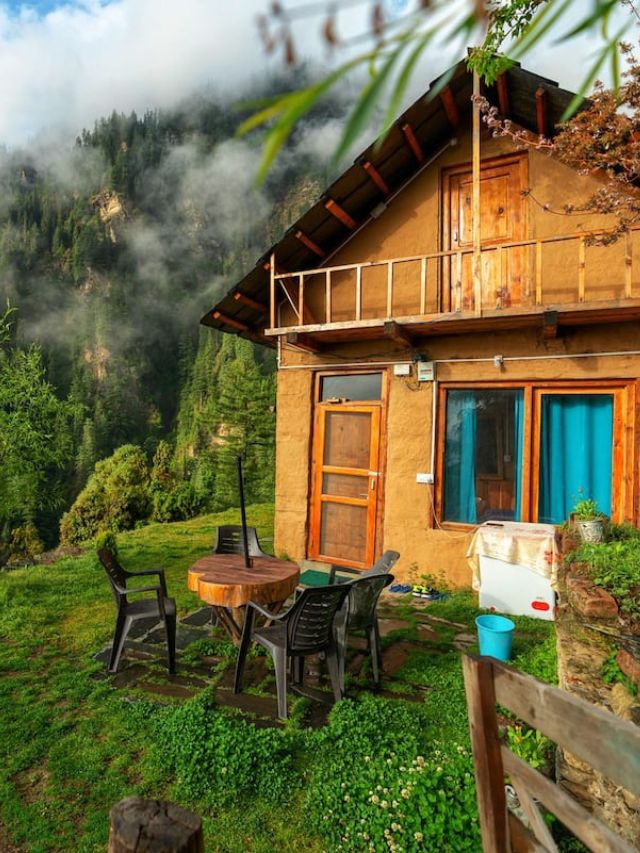
In an age where travel often means ticking off checklists and navigating crowds, Jibhi offers a refreshing counterpoint. Its appeal lies not in grand monuments or sprawling resorts, but in its intrinsic simplicity, authenticity, and profound connection to nature. But what truly sets Jibhi apart and makes it a must-visit destination?
A. Escaping the Over-Tourism Trap:
While Himachal Pradesh boasts many famous hill stations, places like Shimla, Manali, and Kasol often grapple with overcrowding, especially during peak seasons. This can sometimes detract from the peaceful mountain experience many travellers seek. Jibhi, along with the wider Tirthan Valley, has managed (so far) to retain its serene ambiance. It operates on a smaller scale, emphasizing sustainable and community-based tourism. Here, you’re less likely to find yourself jostling for space and more likely to find quiet corners for contemplation, undisturbed trails for exploration, and genuine interactions with locals. Choosing Jibhi is choosing quality over quantity, peace over pandemonium.
B. Unparalleled Natural Beauty – Raw and Untouched:
Jibhi is a visual symphony orchestrated by nature. Imagine dense forests of Deodar (Himalayan Cedar) and Pine trees stretching as far as the eye can see, their canopies filtering sunlight onto moss-covered paths. Picture the Tirthan River, its waters so clear you can count the pebbles on its bed, flowing energetically through the valley, carving gorges and nurturing life. Visualize hidden waterfalls cascading down rocks, veiled by mist and foliage, creating secret sanctuaries of sound and spray. Add to this the backdrop of rolling hills that turn into snow-capped giants as you ascend towards passes like Jalori. Jibhi isn’t just scenic; it’s immersive. The air is cleaner, the sounds are natural (birds, river, wind), and the connection to the earth feels primal and profound.
C. Authentic Himachali Culture and Warm Hospitality:
Jibhi offers a precious window into the traditional lifestyle of the Kullu region’s inner Seraj area. Life here revolves around agriculture (maize, apples, rajma), animal husbandry, and age-old crafts like weaving. You’ll see unique Kath-Kuni architecture – sturdy, aesthetic structures built from interlocking wood and stone without cement – a testament to indigenous wisdom. More importantly, you’ll encounter the warmth of the Himachali people. Hospitality (‘Mehmaan Nawazi‘) is deeply ingrained. Staying in a homestay often means sharing meals with the family, listening to local stories, and experiencing a genuine welcome that goes beyond commercial transactions. This cultural immersion is a core part of Jibhi’s charm.
D. A Hub for Adventure and Exploration:
While tranquility is paramount, Jibhi is far from dormant. It serves as an excellent base for a variety of adventures catering to different fitness levels. From gentle riverside walks and moderate treks to hidden waterfalls and ancient forts, to more challenging expeditions into the Great Himalayan National Park (GHNP), there’s something for everyone.
Jalori Pass, a short drive away, is the gateway to stunning high-altitude meadows and lakes. Angling for trout in the Tirthan River is another popular pursuit. Jibhi allows you to tailor your adventure, whether it’s a leisurely exploration or a physically demanding challenge.
E. The Rise of Sustainable and Slow Travel:
Jibhi embodies the principles of sustainable and slow travel. Many accommodations are eco-conscious homestays and guesthouses run by local families, ensuring that tourism benefits the community directly. The emphasis is on appreciating the local environment and culture rather than consuming them passively. The pace of life encourages travellers to slow down, observe, connect, and minimize their footprint. Visiting Jibhi is an opportunity to travel more mindfully and responsibly.
In essence, Jibhi attracts those who seek more than just a vacation. It draws travellers looking for authenticity, peace, connection, and a gentle adventure, all wrapped in the breathtaking beauty of the Himalayas. It’s a place to recharge your spirit, reconnect with nature, and discover the simple joys of mountain life.
2. Jibhi’s Natural Tapestry: Diving Deep into Landscapes, Rivers, and Forests
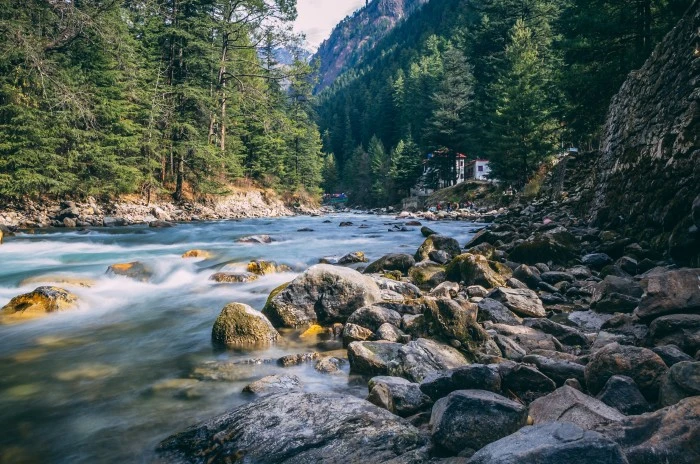
The soul of Jibhi lies in its pristine natural environment. It’s a landscape that soothes, inspires, and invigorates. Let’s explore the key elements that make up this stunning natural mosaic.
A. The Tirthan Valley: Jibhi’s Cradle:
Jibhi doesn’t exist in isolation; it’s an integral part of the larger Tirthan Valley ecosystem. This valley is carved by the Tirthan River, which originates from the glacial springs of Hanskund peak within the Great Himalayan National Park (GHNP).
- Geography: The valley is characterized by steep slopes covered in dense forests, interspersed with small terraced farms and picturesque villages. It runs roughly parallel to the Beas River valley (where Kullu and Manali are located) but is separated by a mountain ridge, contributing to its relative seclusion.
- Significance: Tirthan Valley is renowned for its biodiversity, largely protected by its association with the Great Himalayan National Park (GHNP). It’s famous for its trout population, pristine environment, and traditional villages. It acts as an eco-zone, promoting conservation and sustainable tourism.
- Great Himalayan National Park Connection: The upper reaches of the Tirthan River flow directly through the core zone of the Great Himalayan National Park, a UNESCO World Heritage Site celebrated for its exceptional biodiversity, including species like the Western Tragopan, Snow Leopard, Himalayan Tahr, and Blue Sheep. While Jibhi itself is outside the park’s core area, its environment is intrinsically linked to the park’s health and conservation efforts.
B. The Lifeblood: Rivers and Streams:
Water shapes the landscape and rhythm of life in Jibhi.
- Tirthan River: The star attraction.
- Source & Purity: Originating from the pristine glaciers and springs within GHNP ensures its waters are exceptionally clear and cold. Its purity is a major draw.
- Ecology: Famous for its Rainbow and Brown Trout population, making it an angler’s paradise (permits required). The river supports a rich aquatic ecosystem and diverse riparian vegetation.
- Activities: Besides angling, the riverbanks are perfect for leisurely walks, picnics, photography, or simply sitting and meditating to the soothing sound of flowing water. Certain stretches with calmer pools might allow for a (very cold!) dip in warmer months. Riverside camping is also popular.
- Accessibility: Easily accessible from multiple points in and around Jibhi village. Bridges and trails often lead down to its banks.
- Local Importance: Provides water for irrigation, sustains local livelihoods (fishing, tourism), and holds cultural significance.
- Jibhi River (Local Stream): Jibhi village also has its own tributary stream that feeds into the Tirthan. The famous Jibhi waterfall is located on this stream. It adds to the village’s charm, with small wooden bridges often crossing it.
C. Cascading Wonders: Waterfalls of Jibhi and Surroundings:
The undulating terrain and numerous streams gift the Jibhi region with several beautiful waterfalls.
- Jibhi Waterfall:
- Location & Access: Hidden within a dense patch of forest, a short, easy walk (10-15 minutes) from the main road near Jibhi village. A well-marked trail, often involving charming wooden bridges over the stream, leads you there.
- Description: Not a massive plunge, but a picturesque cascade flowing over moss-covered rocks into a small pool. The setting is intimate and serene, enclosed by towering trees. The sound of the water and birdsong creates a natural symphony.
- Experience: Ideal for a quick escape, photography, and quiet contemplation. The cool spray is refreshing. Be cautious on slippery rocks near the water.
- Best Time: Beautiful year-round, but particularly lush during and after the monsoon (exercise caution). Morning visits often offer soft light and fewer people.
- Chhoie Waterfall (Near Gushaini):
- Location & Access: Located near Gushaini village, further down the Tirthan Valley (around 8-10 km from Jibhi). Reaching it requires a moderate trek of about 45 minutes to an hour through forested paths and potentially small village fields.
- Description: Generally larger and more forceful than Jibhi Waterfall, especially post-monsoon. It cascades down a rock face into a pool, surrounded by lush greenery.
- Experience: Offers a slightly more adventurous feel due to the trek. It’s a rewarding spot for nature lovers and photographers. Pack water and snacks for the hike.
- “Mini Thailand” (Kulhi Katandi):
- Location & Access: An offbeat spot, often requiring guidance from locals or specific directions. It involves a short hike down from the road, usually located between Jibhi and Banjar. The name “Mini Thailand” is a colloquial term given by travellers/locals.
- Description: Characterized by smooth, interestingly shaped rock formations creating natural shallow pools with crystal-clear water flowing through them. The visual resemblance to some landscapes in Thailand (limestone karst formations and clear waters) likely inspired the name.
- Experience: A unique spot for wading, relaxing by the pools, and photography. It feels secluded and tranquil. Accessibility might vary depending on the water levels and trail conditions. Best visited in drier seasons for clearer pools and easier access.
D. The Verdant Cloak: Forests, Flora, and Fauna:
Jibhi is enveloped in a rich tapestry of forests, contributing significantly to its beauty and ecological balance.
- Dominant Species: Deodar (Himalayan Cedar), Pine (Chir Pine), Oak, Rhododendron, Maple, and Birch are common trees found in the region, depending on the altitude. The forests are dense and often ancient.
- Seasonal Changes: The landscape transforms dramatically with the seasons. Spring (March-April) brings vibrant Rhododendron blooms (red, pink) and other wildflowers. Summer (May-June) is lush green. Autumn (October-November) paints the hillsides in hues of gold, orange, and red as deciduous trees shed their leaves. Winter (December-February) often blankets the higher reaches and sometimes Jibhi itself in snow.
- Flora: Besides trees, the undergrowth is rich with ferns, mosses, medicinal herbs, and various shrubs. Edible wild mushrooms and ferns (like ‘Lingri’) are collected by locals seasonally.
- Fauna: While large mammals are primarily found within the GHNP core zone, the forests around Jibhi are home to various bird species, making it a delight for birdwatchers. Common sightings might include Himalayan Monal (state bird), various species of tits, flycatchers, woodpeckers, and laughingthrushes. Smaller mammals like langurs, martens, and foxes might occasionally be spotted. The river teems with trout. Remember to observe wildlife responsibly from a distance.
The interplay of the valley, river, waterfalls, and forests creates an ecosystem that is both visually stunning and ecologically vital. Exploring this natural tapestry is the very essence of the Jibhi experience.
3. Thrills in Tranquility: Adventure Activities In and Around Jibhi
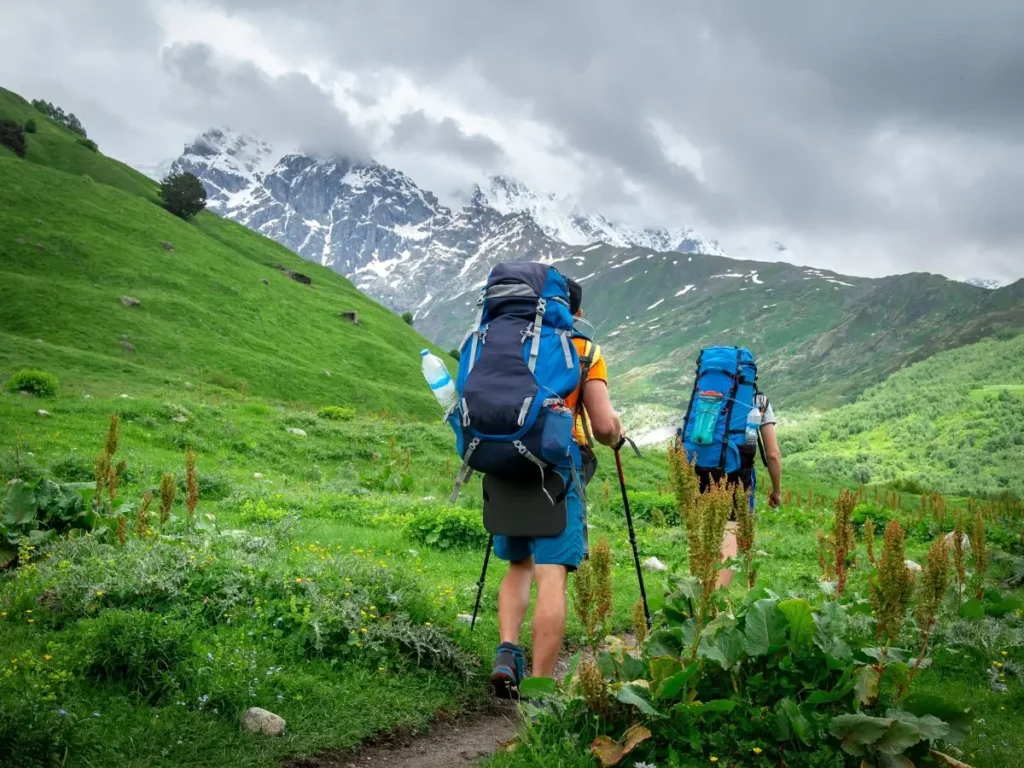
While Jibhi is a sanctuary for peace-seekers, it simultaneously offers a playground for adventure enthusiasts. The rugged Himalayan terrain, pristine river, and network of trails provide ample opportunities to get your adrenaline pumping or simply engage in active exploration.
A. Trekking: Trails for Every Foot:
Jibhi serves as a fantastic base or starting point for numerous treks, ranging from easy walks to multi-day expeditions.
- Jalori Pass (Altitude: Approx. 10,800 feet / 3,120 meters): The Gateway
- Accessibility: Located about 12-15 km from Jibhi, reachable by road (taxi or own vehicle). The drive itself is scenic but steep and winding. The pass is usually open from March/April to November/December, closing in peak winter due to heavy snowfall.
- Significance: Offers breathtaking panoramic views of the Pir Panjal and Dhauladhar ranges on clear days. It connects the inner Seraj region (where Jibhi lies) with the outer Seraj region leading towards Shimla. It’s the starting point for several popular treks.
- Experience: Even if not trekking further, visiting the pass for the views is highly recommended. There are a couple of dhabas offering tea and snacks.
- Serolsar Lake Trek (From Jalori Pass):
- Difficulty: Easy to Moderate.
- Duration: Approx. 5-6 km one way, takes about 1.5-2.5 hours each way.
- Trail: A relatively well-defined path winding through dense oak and rhododendron forests. Mostly gentle gradients with a few short steeper sections.
- Destination: Serolsar Lake is a stunning high-altitude lake surrounded by thick forests. It’s considered sacred, dedicated to Buddhi Nagin (Snake Goddess). There’s a small temple near the lake. Camping directly beside the lake is usually discouraged to maintain its sanctity and cleanliness. Locals believe the lake is miraculously kept clean by birds picking up any leaf that falls into it.
- Best Time: Spring (wildflowers), Summer (pleasant weather), Autumn (clear views, fall colours). Possible in early winter with snow, but check conditions.
- Raghupur Fort Trek (From Jalori Pass):
- Difficulty: Easy to Moderate.
- Duration: Approx. 3 km one way, takes about 1-1.5 hours each way.
- Trail: Steeper ascent compared to Serolsar Lake trek, leading through meadows and forests.
- Destination: Leads to the ruins of Raghupur Fort perched on a ridge, offering spectacular 360-degree views of the surrounding valleys and Himalayan ranges. The fort itself is mostly dilapidated walls, but the location and views are the main reward.
- Best Time: Similar to Serolsar Lake trek – avoid monsoon peak due to slippery paths and potential fog obscuring views.
- Chehni Kothi Trek:
- Starting Point: Usually starts from a roadhead near Shringa Rishi Temple in Bagi village (short drive from Jibhi).
- Difficulty: Moderate. Involves a steady uphill climb.
- Duration: Around 1-2 hours one way.
- Trail: Passes through small villages, apple orchards, and forests, offering glimpses into local life.
- Destination: Leads to the impressive Chehni village, known for its towering Kath-Kuni structures, particularly the main Chehni Kothi tower temple (dedicated to Jogini goddess, though Shringa Rishi is also revered here). These towers served historically as fortified storehouses and watchtowers. Exploring the village architecture is fascinating.
- Great Himalayan National Park (GHNP) Treks:
- Access: Entry points into the park’s eco-zone are accessible from Tirthan Valley (e.g., Gushaini).
- Requirement: Require permits and licensed guides. Treks range from moderate (e.g., Shilt Hut, Rolla) to strenuous multi-day expeditions (e.g., crossing passes to Sainj Valley, routes towards the sources of rivers).
- Experience: Offers unparalleled wilderness experience, chances to spot rare wildlife (though sightings are not guaranteed), pristine forests, rivers, and meadows. Requires proper planning, good fitness, and appropriate gear. These are serious treks, not casual walks.
- Shorter Nature Walks:
- Numerous possibilities exist for gentle walks around Jibhi village itself – along the riverbanks (Tirthan or the local Jibhi stream), through nearby woods, or up to viewpoints overlooking the valley. Ask locals or your homestay host for recommendations.
Click Here to Watch Web Stories
Places to Visit in Himachal Pradesh
B. Fishing / Angling: The Trout Trail:
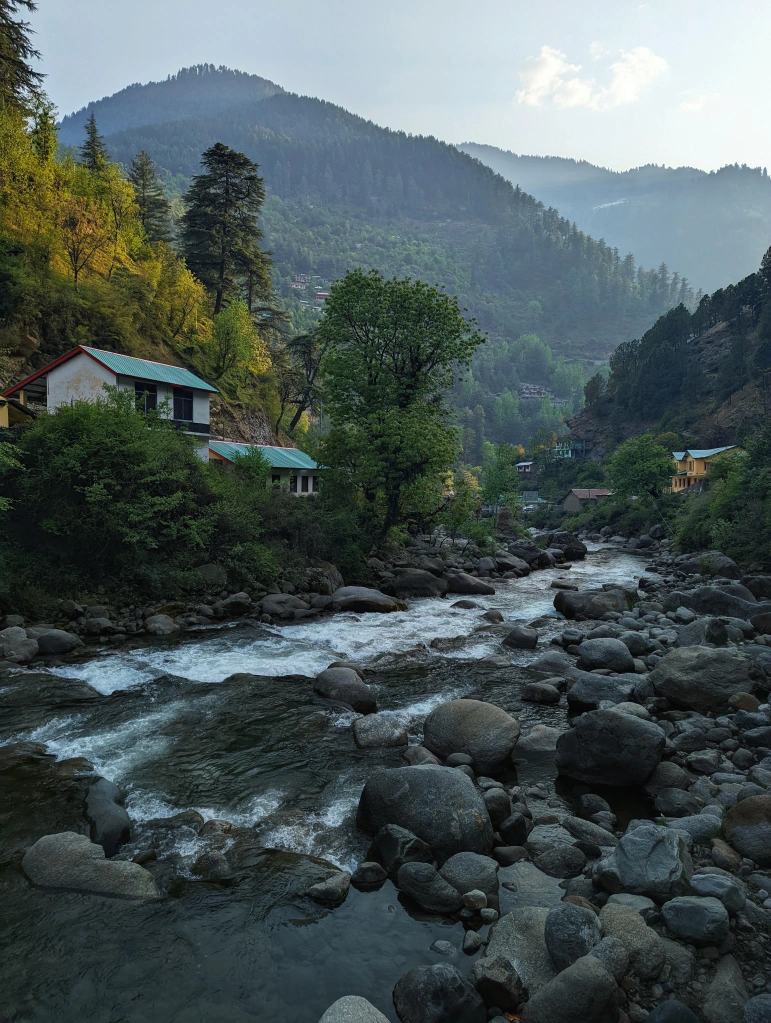
- Species: The Tirthan River is famous for its Rainbow Trout and Brown Trout, introduced during the British era.
- Permits: Angling is regulated to conserve fish stocks. A permit is mandatory and can usually be obtained from the Fisheries Department office in Banjar or through authorized guesthouses/operators. Fees apply per day/per rod.
- Technique: Fly fishing is the preferred and more sustainable method. Spin fishing might also be allowed. Catch-and-release is often encouraged, especially for larger breeding fish, to maintain the ecological balance.
- Guides & Gear: Local guides who know the best spots and techniques can significantly enhance the experience. Basic equipment (rods, reels, lures/flies) can sometimes be rented locally, but serious anglers prefer bringing their own gear.
- Best Season: Generally considered to be from March to October, avoiding the monsoon peak (July-August) when the river is high and muddy, and the winter spawning season.
C. Birdwatching: A Symphony in the Skies:
The diverse forests and varying altitudes make Jibhi and the surrounding Tirthan Valley a haven for birdlife.
- Key Species: Look out for Himalayan Monal, Western Tragopan (rare, within GHNP), Cheer Pheasant, Koklass Pheasant, Himalayan Griffon, Lammergeier, various woodpeckers, thrushes, tits, warblers, flycatchers, and finches.
- Best Spots: Forest trails (like the Serolsar Lake trek), riverside areas, and quieter village outskirts are good places. Early mornings are usually the most productive time.
- Gear: Binoculars are essential. A bird identification guide specific to the Western Himalayas can be very helpful. Patience and silence are key.
D. Camping: Under the Himalayan Stars:
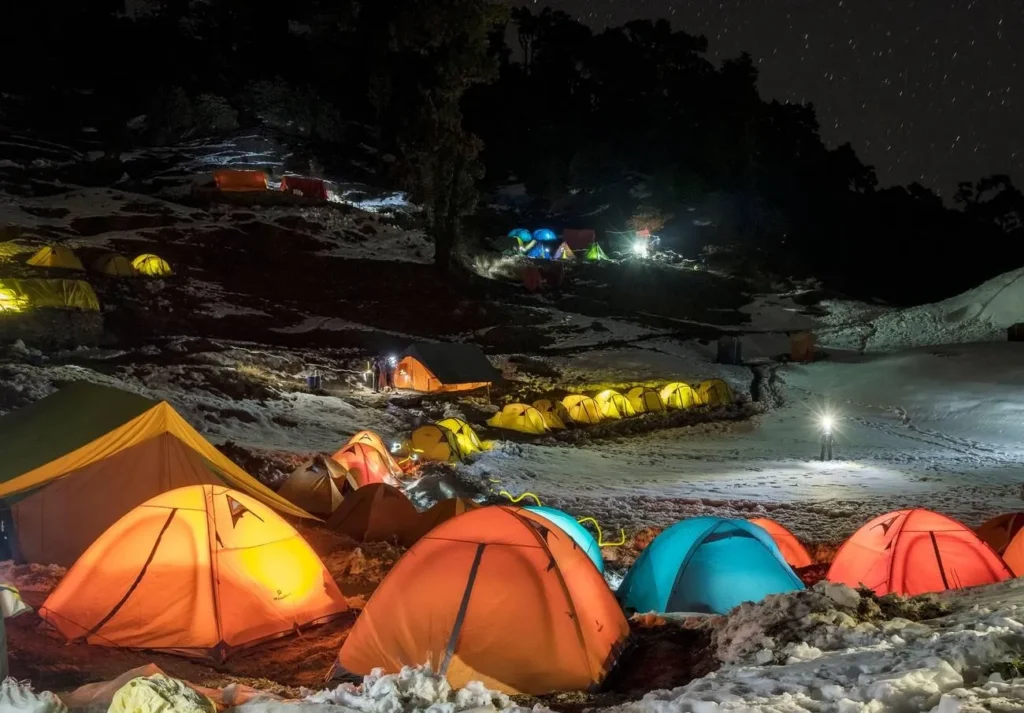
- Options: Several organized campsites operate near Jibhi, often along the Tirthan River or in scenic meadows. These range from basic tented accommodation to more comfortable ‘glamping’ setups with attached washrooms and better amenities.
- Experience: Offers a direct connection with nature – sleeping to the sound of the river, enjoying bonfires, stargazing in clear mountain skies. Organized sites often provide meals and activities.
- Responsible Camping: If camping independently (where permitted), strictly follow Leave No Trace principles. Pack out all trash, use designated fire pits or avoid fires altogether, minimize noise, and respect the environment. Avoid camping too close to the river during monsoon due to flash flood risks.
E. Emerging Adventures:
While trekking, fishing, and camping are staples, other possibilities might emerge as tourism develops:
- River Crossing: Some operators might offer basic zip-lining or Burma bridge type river crossing activities over the Tirthan or smaller streams, especially during tourist seasons.
- Rappelling/Rock Climbing: Potential exists on some rock faces, but organized activities are less common than in dedicated adventure hubs. Check locally for certified operators if interested.
- Mountain Biking: The road towards Jalori Pass and some trails could potentially be used for mountain biking, although this is not yet a widely developed activity here.
Adventure in Jibhi is less about extreme sports and more about immersing yourself actively in the stunning natural environment. Always prioritize safety, check weather conditions, hire qualified guides for serious treks or activities, and respect the local ecosystem.
Places to Visit in Himachal Pradesh
4. Cultural Immersion: Experiencing Jibhi’s Rich Heritage and Traditions
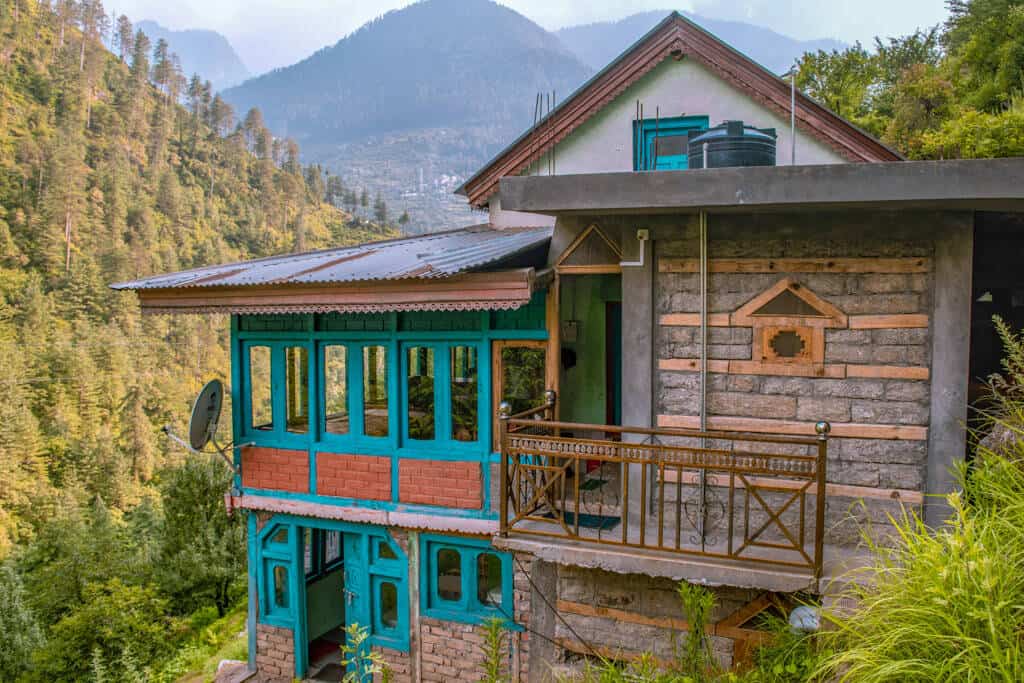
Beyond the captivating landscapes, Jibhi offers a deep dive into the unique culture and traditions of the inner Seraj region of Kullu. It’s a culture shaped by the mountains, closely tied to nature, and preserved through generations.
A. Architectural Marvels: The Art of Kath-Kuni:
One of the most visually striking aspects of Jibhi and surrounding villages is the traditional architecture known as Kath-Kuni.
- Technique: This indigenous method involves layering locally sourced stone and timber (usually Deodar wood) without using cement or mortar. Wooden beams run through the structure, providing flexibility and strength. Notches are expertly cut (‘Kuni’) into the wood (‘Kath’) to create interlocking joints. Slate tiles are typically used for roofing.
- Advantages: This construction style is remarkably resilient to earthquakes, a significant benefit in the seismically active Himalayan region. The thick walls provide excellent insulation against both cold winters and warm summers. It utilizes locally available materials sustainably.
- Examples: You’ll see this style in old homes throughout Jibhi, Gushaini, and Chehni villages. The most towering examples are the temple-fort towers of Chehni Kothi, standing for centuries as testaments to this architectural brilliance. Many newer homestays and guesthouses also incorporate elements of Kath-Kuni, blending tradition with modern comforts.
- Preservation: Efforts are being made by locals and heritage enthusiasts to preserve these structures and the knowledge of this building technique, which faces challenges from modern construction methods.
B. Local Lifestyle: Simplicity and Community:
Life in Jibhi retains a rhythm often lost in urban settings.
- Agriculture: The primary occupation revolves around farming on terraced fields carved into the hillsides. Key crops include maize, rajma (kidney beans), potatoes, and increasingly, apples and other stone fruits in orchards.
- Animal Husbandry: Rearing sheep, goats, and cows is common for wool, milk, and manure. You’ll often see flocks grazing on meadows, especially in higher altitudes during summer.
- Weaving: Wool from local sheep is spun and woven into traditional garments like ‘Pattu’ (a thick woolen drape worn by women), shawls, and blankets. Handlooms are a common sight in homes, especially during winter months when fieldwork is minimal.
- Community Ties: Villages function with strong community bonds. Neighbours help each other during farming seasons, festivals, and personal events. Decisions impacting the village are often made collectively.
- Hospitality: As mentioned earlier, welcoming guests (‘Atithi Devo Bhava’ – The Guest is God) is a cornerstone of Himachali culture. Expect genuine smiles, offers of tea, and warm conversations, especially if staying in homestays.
- Language: The local dialect is a form of Kullui Pahari. Hindi is widely understood and spoken, especially by those involved in tourism. Basic English is also spoken in tourist establishments. Learning a few basic Pahari phrases like ‘Juley’ (Hello/Goodbye/Thank you – borrowed from Ladakhi but commonly used) or ‘Namaste’ will be appreciated.
C. Temples, Deities, and Spirituality:
Spirituality is deeply woven into the fabric of daily life, often blending Hindu traditions with older animistic beliefs centered around nature deities.
- Shringa Rishi Temple (Bagi Village):
- Significance: Dedicated to Sage Shringa (Rishi Shring), who is highly revered in the region and considered the ruling deity of the Banjar valley area. Local legend connects him to the Ramayana epic (he is said to have performed the yagna that led to the birth of Lord Rama).
- Architecture: A beautiful example of traditional pagoda-style Himachali temple architecture with intricate wood carvings.
- Importance: It’s a major religious center for the valley. Visitors should dress modestly and respectfully. You might need to remove shoes before entering the inner sanctum.
- Chehni Kothi (Chehni Village):
- Dual Role: Primarily known for its architectural towers, the taller structure also functions as a temple dedicated to the goddess Jogini (a local manifestation of Devi). The adjacent shorter tower is associated with Shringa Rishi.
- Historical Context: These structures likely served as fortified residences, grain storage, and watchtowers for local rulers (‘Thakurs’) centuries ago, offering protection against rivals and harsh weather. Their resilience speaks volumes about Kath-Kuni construction.
- Serolsar Lake Temple (Buddhi Nagin):
- Location: Situated beside the sacred Serolsar Lake.
- Deity: Dedicated to Buddhi Nagin (Old Snake Goddess), believed to be the lake’s protector. Devotees offer ghee and prayers here. The legend of birds keeping the lake clean is associated with her power.
- Village Deities (‘Devtas’): Each village or region often has its own local deity, represented by ornate masks or idols (‘Mohras’), housed in temples. These Devtas play a central role in festivals and local governance, often ‘communicating’ through chosen oracles (‘Gurs’). Their processions during fairs are spectacular events.
D. Festivals and Fairs: A Riot of Colour and Tradition:
Festivals are vibrant expressions of local culture, faith, and community spirit. While some major Hindu festivals are celebrated, unique regional festivals hold special significance.
- Fagli Festival (February/March):
- Significance: Celebrated primarily in the inner Seraj region (including Tirthan Valley) to mark the end of winter and welcome spring. It’s a time to cleanse homes and villages, ward off evil spirits, and pray for prosperity.
- Rituals: Involves unique traditions like locals dressing in specific costumes and masks (representing deities or demons), dancing around bonfires, singing folk songs (‘Natis’), and performing specific rituals. The exact celebrations can vary between villages. It’s a fascinating display of pre-Hindu customs blended with local beliefs.
- Kullu Dussehra (October – Celebrated in Kullu):
- Connection: While celebrated grandly in Kullu town (a few hours’ drive from Jibhi), it holds significance for the entire region. Jibhi locals often participate or visit.
- Uniqueness: Unlike Dussehra elsewhere (celebrating Rama’s victory over Ravana), Kullu Dussehra is a week-long festival centered around Lord Raghunath (Rama) and involves a spectacular procession (‘Rath Yatra’) where hundreds of local village deities (Devtas), carried on ornate palanquins (‘Raths’), congregate in Kullu to pay homage. It’s a massive cultural and religious spectacle.
- Local Village Fairs (‘Melas’):
- Occurrence: Numerous small fairs are held throughout the year, often linked to specific temples or agricultural cycles.
- Experience: These fairs are lively affairs featuring folk music and dance (especially the traditional ‘Nati’ dance performed in circles), local markets selling crafts and produce, community feasts, and religious ceremonies involving the village Devta. Attending a local mela offers an authentic glimpse into the community’s social and cultural life. Ask locally about upcoming fairs during your visit.
- Other Festivals: Baisakhi (April – harvest festival, start of sowing season), Diwali, Holi, and Shivratri are also celebrated with local variations and enthusiasm.
E. Local Crafts and Music:
- Crafts:
- Woolens: Handwoven shawls, Pattu, caps (‘Topis’ – distinctive Kullu caps with colorful borders), socks, and blankets are primary crafts. Look for items made from local sheep wool.
- Wood Carving: Seen intricately on temples, old houses, and sometimes in decorative items.
- Metalwork: Traditional silver ornaments and the ornate masks (‘Mohras’) of deities showcase local metal craftsmanship.
- Music:
- Folk Songs (‘Nati’): Accompanied by traditional instruments like Dhol (drums), Nagara (kettledrums), Shehnai (wind instrument), Karnal (long trumpet), and sometimes harmonium. Songs often narrate local legends, love stories, or celebrate nature. The Nati dance, performed by both men and women in colourful traditional attire, is a highlight of any celebration.
Experiencing Jibhi’s culture requires respectful observation and interaction. Engage with locals politely, ask permission before taking photographs (especially of people or inside temples), dress modestly when visiting religious sites, and embrace the opportunity to learn about a way of life deeply connected to the Himalayan landscape.
5. Where to Stay in Jibhi: From Cozy Homestays to Enchanting Treehouses
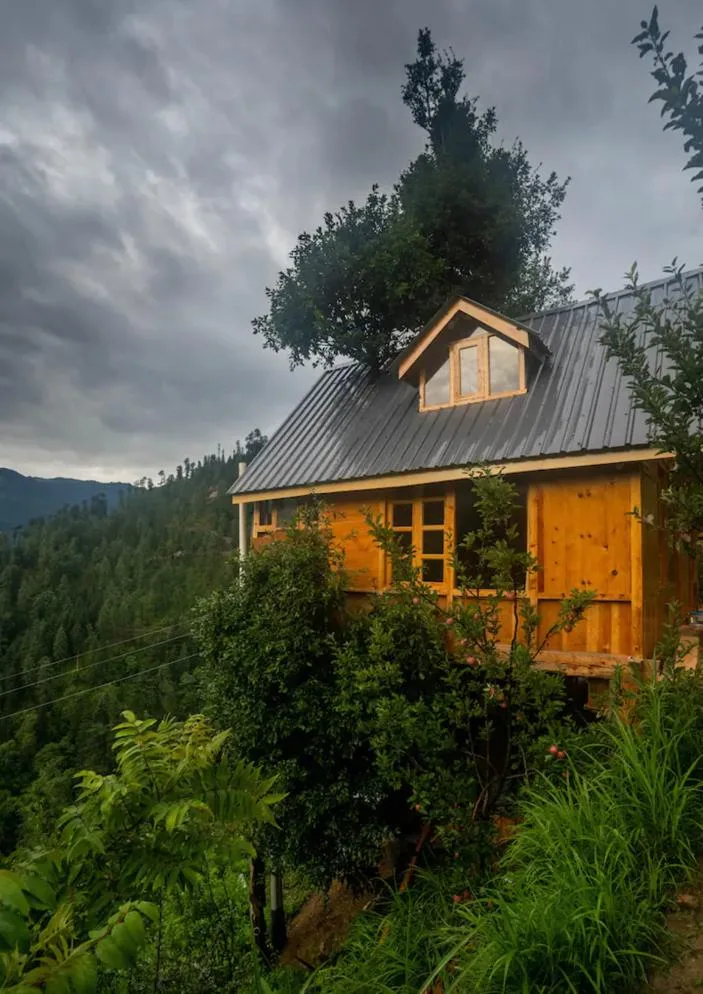
Accommodation in Jibhi has evolved from basic homestays to include a charming variety of options, catering to different budgets and preferences. The emphasis remains largely on smaller, locally-run establishments that blend with the natural surroundings.
A. Homestays: The Heart of Jibhi’s Hospitality:
This is arguably the most authentic way to experience Jibhi.
- What to Expect: Staying with a local family in their home, usually in designated guest rooms. Rooms are typically simple, clean, and cozy, often featuring traditional wooden architecture. Bathrooms may be attached or shared. Home-cooked Himachali meals are usually part of the experience (often included or available at a reasonable cost).
- Benefits: Direct interaction with the host family offers invaluable cultural insights. You get to taste authentic, lovingly prepared local food. It’s often the most budget-friendly option. Supports the local community directly.
- Finding Homestays: Many are listed on platforms like Booking.com, Airbnb, or specialized travel sites. Local recommendations and word-of-mouth also work well. Some may not have an online presence and can be found upon arrival (though booking ahead is recommended, especially in peak season).
- Examples (Conceptual): Look for names suggesting local families or traditional homes, often emphasizing valley views or riverside locations. Reviews highlighting host interactions and food quality are good indicators.
B. Guesthouses and Smaller Hotels:
These offer a bit more privacy and standardized amenities compared to homestays, while still retaining a local flavour.
- What to Expect: Private rooms with attached bathrooms, perhaps slightly more formal service than a homestay. May have small in-house restaurants or cafes. Architecture often incorporates local wood and stone elements.
- Benefits: Good balance between comfort, privacy, and local experience. Often run by local entrepreneurs. Wider range of amenities might be available (Wi-Fi, room service, etc.).
- Finding Guesthouses: Widely listed online. Look for properties with good reviews regarding cleanliness, service, and location.
C. Treehouses: A Magical Escape:
Jibhi has gained popularity for its enchanting treehouse accommodations, offering a unique and often romantic experience.
- What to Expect: Cabins built on stilts or elevated platforms among the trees, often constructed primarily of wood. They range from rustic and basic to quite luxurious with modern amenities. Balconies offering forest or valley views are a common feature.
- Benefits: Novelty factor, feeling immersed in nature, often stunning views, provides a memorable and instagrammable stay. Ideal for couples or those seeking a special experience.
- Finding Treehouses: Several popular options are listed on Airbnb, Booking.com, and other travel portals. Examples mentioned in the initial prompt include:
- The Tree Top Treehouse: Known for balconies, Wi-Fi.
- Timber Tree House: Cozy, valley/mountain views.
- Majestic Treehouse with Valley View: Romantic setting, spacious.
- Hidden Jewel Tree House: Enchanting retreat, serene atmosphere.
- Pinnacle Tree House: Reconnecting with nature focus.
- (Note: Availability and specific features should always be double-checked on booking platforms).
- Considerations: Can be more expensive than homestays or guesthouses. Access might involve stairs or uneven paths. May have fewer amenities than conventional hotels. Book well in advance, as popular treehouses get filled quickly.
D. Camping and Glamping Sites:
For those who love sleeping under the stars, Jibhi offers organized camping options.
- Camping: Basic tent accommodation, often near the river or in meadows. Shared washroom facilities are typical. Provides a raw connection with nature.
- Glamping (Glamorous Camping): More luxurious tents, often with comfortable beds, attached or private washrooms, electricity, and better amenities. Offers the outdoor experience with added comfort.
- Finding Sites: Several operators run campsites in and around Jibhi. Examples from the prompt:
- Mountain View Campsite: Natural setting, local flora/fauna.
- Jibhi Camps and Cottages: Budget-friendly, valley views.
- Open Sky Glamping: Bonfires, live music, mountain views.
- Nature Camping (Thrillophilia): Riverside location.
- Experience: Often includes bonfires, simple meals, and opportunities for stargazing. Ideal for groups, adventurers, and budget travellers (basic camping). Check inclusions carefully (meals, bedding, etc.).
E. Cottages and Independent Rentals:
Some properties offer independent cottages or apartments, suitable for families or groups seeking more space and privacy, possibly with kitchen facilities. These can be found on platforms like Airbnb or through local contacts.
F. Booking Tips:
- Book in Advance: Especially for peak seasons (Spring, Summer, Autumn) and for popular accommodations like treehouses.
- Read Reviews: Pay attention to recent reviews regarding cleanliness, host responsiveness, food quality, location accuracy, and Wi-Fi reliability (if important).
- Verify Location: Jibhi and Tirthan Valley cover a dispersed area. Check the exact location of the stay relative to the main village, river, road access, and attractions you plan to visit.
- Communicate Needs: If you have specific dietary requirements, mobility issues, or need particular amenities (like parking, strong Wi-Fi), communicate with the host before booking.
- Consider Packages: Some homestays or guesthouses might offer packages including meals, guided treks, or fishing permits.
Choosing the right accommodation significantly impacts your Jibhi experience. Whether you prioritize cultural immersion in a homestay, the unique charm of a treehouse, or the back-to-nature feel of camping, Jibhi offers delightful options to suit your travel style.
6. A Culinary Journey: Tasting the Authentic Flavors of Jibhi and Himachali Cuisine
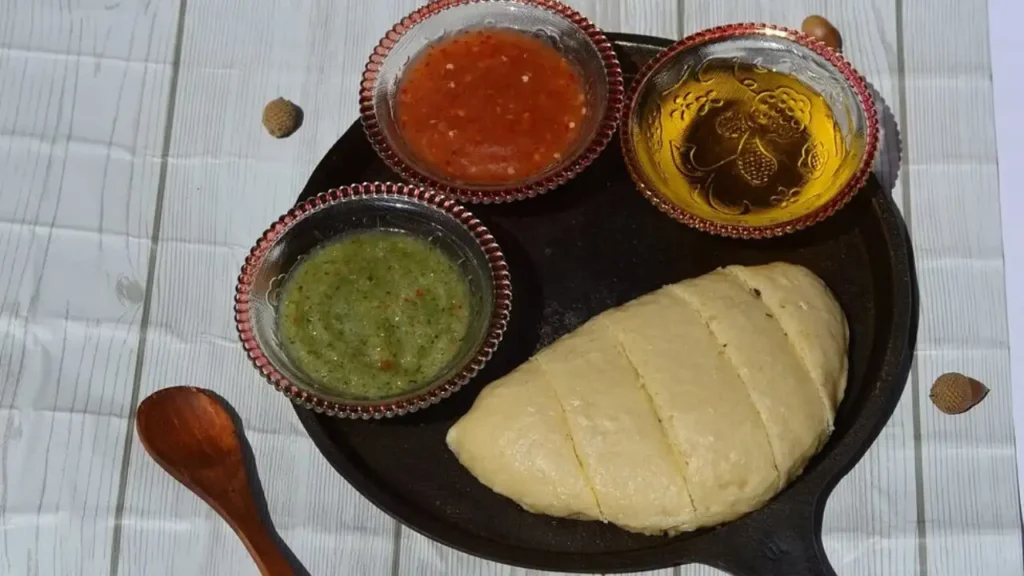
No trip to Jibhi is complete without indulging in the local cuisine. Himachali food is typically hearty, nutritious, and flavourful, relying on locally sourced ingredients and traditional cooking methods. It reflects the mountain lifestyle – providing warmth and energy. Eating in Jibhi, especially home-cooked meals at homestays, is a cultural experience in itself.
A. Introduction to Himachali Cuisine:
- Core Principles: Emphasis on seasonal availability, local grains (wheat, maize, barley, buckwheat), legumes (rajma, lentils), vegetables, dairy products (ghee, yogurt, buttermilk), and simple but distinct spicing. Cooking is often slow and uses traditional utensils.
- Influence of Climate: The colder climate necessitates food that provides warmth. Dishes are often rich and sometimes use warming spices like cloves, cinnamon, and cardamom. Fermentation and drying techniques are used to preserve food for leaner months.
- Regional Variations: Cuisine varies across Himachal. Jibhi falls within the Kullu region, known for dishes like Siddu and Trout, and the celebratory Dham feast.
B. Must-Try Local Dishes in Jibhi:
- Siddu:
- Description: A steamed, fermented bun made from wheat flour (Atta). It’s typically stuffed with a savory filling, most commonly mashed potatoes mixed with spices, walnuts, or sometimes poppy seeds (Posta).
- Serving: Served piping hot, usually broken into pieces and generously drizzled with pure ghee (clarified butter). Often accompanied by green chutney (pudina/dhania) or dal (lentil curry).
- Experience: Soft, slightly tangy bread with a flavourful filling, made incredibly comforting by the warm ghee. A quintessential Himachali snack or light meal, especially beloved in winter.
- Chana Madra (or Rajma Madra):
- Description: A signature dish from the Chamba region, but popular across Himachal, including Kullu. It’s a thick, creamy curry made with chickpeas (Chana) or kidney beans (Rajma) cooked slowly in a yogurt-based gravy. Flavored with a unique blend of spices like cloves, cinnamon, cardamom, cumin, and turmeric. It’s less spicy-hot and more aromatic.
- Serving: Best enjoyed with steamed rice or roti/chapati.
- Experience: Rich, tangy, and mildly spiced. The yogurt base gives it a distinctive texture and flavour profile, different from typical North Indian curries. A staple in the traditional Dham feast.
- Babru:
- Description: Himachal’s version of the North Indian kachori or stuffed poori. These are deep-fried breads made from wheat flour, stuffed with a paste of soaked and ground black gram dal (lentils), seasoned with spices.
- Serving: Often eaten for breakfast or as a tea-time snack. Served hot, sometimes with tamarind chutney or simply with a cup of tea.
- Experience: Crispy on the outside, soft and flavourful on the inside. A satisfying and energy-boosting snack, perfect for the mountain climate.
- Tudkiya Bhath:
- Description: A flavourful, one-pot rice dish, considered a Himachali pulao. Rice is cooked with lentils (often moong or masoor dal), potatoes, onions, tomatoes, yogurt, and a medley of spices like bay leaves, cinnamon, cardamom, cloves, and turmeric. Ghee is generously used.
- Serving: Usually served hot, often garnished with fresh coriander and a squeeze of lemon juice. Can be a complete meal in itself.
- Experience: Aromatic, tangy, and mildly spiced comfort food. Each household might have its own subtle variation.
- Dham: The Traditional Community Feast:
- Concept: Not a single dish, but a grand, multi-course vegetarian meal traditionally cooked by Brahmin chefs called ‘Botis’ and served during festive occasions like weddings, religious events, or important celebrations. It’s a significant cultural experience.
- Serving Style: Served in courses on leaf plates called ‘Pattals’ while seated on the ground, following a specific sequence.
- Common Dishes: Typically includes aromatic rice, Chana Madra or Rajma Madra, Sepu Vadi (lentil dumplings in spinach gravy), Kaddu ka Khatta (sweet and sour pumpkin dish), Khatta (sour dish, often chickpeas or pumpkin based), various dals (lentil curries like Mahni – Urad dal based), sometimes a seasonal vegetable preparation, and finally Meetha Chawal (sweet saffron rice) or Mittha (sweetened boondi or bread crumbs).
- Experience: A unique culinary journey showcasing the diversity and richness of Himachali vegetarian cuisine. If you get an opportunity to partake in a Dham, consider it a privilege. Some restaurants or homestays might offer a thali version simulating the Dham experience.
C. Local Specialties:
- Freshwater Trout:
- Availability: Being right on the Tirthan River, Jibhi is renowned for its fresh trout.
- Preparation: Most commonly served grilled or pan-fried with minimal seasoning (like lemon, herbs, salt, pepper) to highlight the fish’s delicate flavour. Sometimes prepared in a light curry or tandoori style.
- Where to Find: Many cafes, restaurants, and guesthouses in Jibhi and Gushaini feature trout on their menu. Ask for the fresh catch of the day.
- Experience: Light, flaky, flavourful, and a healthy option. A must-try for non-vegetarians visiting the valley.
- Lingri ki Sabzi (Fiddlehead Fern):
- Availability: A seasonal delicacy, Lingri (fiddlehead ferns) grow wild in moist, shady areas during the monsoon season (around July-August).
- Preparation: Young coiled ferns are picked, cleaned, and usually cooked as a simple stir-fry (sabzi) with basic spices like mustard oil, turmeric, and chilli. Sometimes made into a pickle.
- Experience: Unique slightly crunchy texture and earthy flavour. A rare treat if you visit during the right season.
- Local Greens (‘Saag’): Various types of locally grown or foraged leafy greens are cooked into simple, nutritious dishes, often tempered with garlic and red chillies.
D. Local Beverages:
- Chhaas (Buttermilk): Freshly churned buttermilk, often lightly spiced with roasted cumin powder and salt. Very refreshing, especially after meals or during warmer days.
- Butter Tea: Influenced by Tibetan culture, especially in higher regions. Salty tea churned with butter (often yak butter traditionally, but cow butter commonly used now). An acquired taste, but provides warmth and energy in cold weather. Might be available in some homestays or cafes.
- Seabuckthorn Juice: Made from the berries of the Seabuckthorn shrub, which grows wild at higher altitudes. Packed with Vitamin C and antioxidants. Tangy and refreshing. Look for locally produced juices or concentrates.
- Local Brews (Caution): Traditional alcoholic beverages like ‘Lugdi’ or ‘Chhang’ (fermented rice or barley beer) and ‘Arak’ (distilled spirit) exist in local culture, often consumed during festivals or social gatherings. Availability for tourists is usually limited and consumption should be discreet and respectful of local norms.
E. Where to Eat in Jibhi:
- Homestays: Offer the most authentic home-cooked meals. Often the best place to try dishes like Siddu and experience genuine Himachali flavours. Inform your host about preferences or allergies.
- Local Dhabas: Small, unassuming eateries often located near the main road or market areas. Serve simple, inexpensive, and hearty meals like Rajma Chawal, Dal Makhani, Roti, Parathas, and Maggi noodles. Great for budget travellers and a taste of everyday food.
- Cafes and Restaurants: A growing number of cafes cater specifically to tourists, offering a mix of Himachali specialties (especially Trout), North Indian, Continental, Israeli, and Tibetan dishes (like Momos, Thukpa). Many have pleasant ambiances, often with outdoor seating or valley views. Explore options in Jibhi village center and along the main roads.
Exploring the food of Jibhi is an adventure for the palate. Be open to trying local specialties, ask about ingredients, and savor the freshness and simplicity that define Himachali mountain cuisine.
7. Planning Your Jibhi Escape: Practical Information for 2025
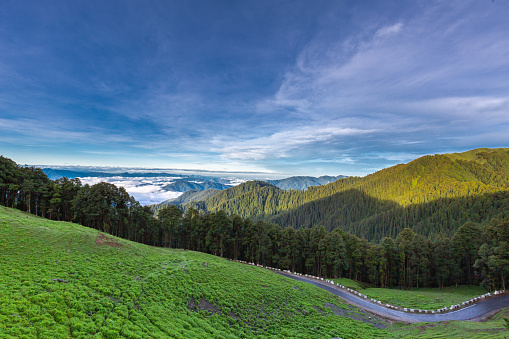
Now that you’re captivated by Jibhi’s charm, let’s get down to the practicalities of planning your trip. Careful planning ensures a smoother, safer, and more enjoyable experience.
A. Best Time to Visit Jibhi:
Jibhi is accessible year-round, but each season offers a distinct experience. The “best” time depends entirely on your interests.
- Spring (March to May): Blooming Beauty
- Weather: Pleasant temperatures ranging from 10∘C to 25∘C. Days are sunny and comfortable, nights are cool.
- Landscape: Snow starts melting at higher altitudes. Valleys turn green, and wildflowers, especially Rhododendrons (around April), add vibrant colour.
- Activities: Ideal for trekking (lower and mid-altitude trails like Serolsar Lake, Chehni Kothi open up), sightseeing, riverside relaxation, angling (Tirthan river is clear), experiencing the Fagli festival (Feb/March). Jalori Pass usually opens by late March or April.
- Crowd: Moderate, picks up towards May. Shoulder season (March-April) can be less crowded.
- Summer (June to Early July): Lush and Pleasant
- Weather: Warmest time, with temperatures between 15∘C to 30∘C. Comfortable for outdoor activities. Occasional pre-monsoon showers possible.
- Landscape: Lush greenery everywhere. Rivers are full but generally clear.
- Activities: Peak season for trekking, camping, sightseeing, fishing. All trails and roads (including Jalori Pass) are accessible.
- Crowd: Peak tourist season. Book accommodation and transport in advance.
- Monsoon (Mid-July to August): Verdant but Risky
- Weather: Temperatures range from 15∘C to 25∘C. Characterized by frequent and sometimes heavy rainfall. High humidity.
- Landscape: The valley is at its greenest and most vibrant. Waterfalls are powerful and dramatic. Lingri (fiddlehead ferns) are in season.
- Activities: Trekking becomes challenging and risky due to slippery trails, leeches, and potential landslides. Angling is difficult as the river becomes muddy and swollen. Sightseeing might be hampered by rain and fog.
- Crowd: Fewer tourists. Good for solitude seekers, but travel with extreme caution. Landslide risk on approach roads is significant. Check road conditions frequently.
- Autumn (September to November): Clear Skies and Colours
- Weather: Considered one of the best times. Temperatures range from 7∘C to 20∘C. Days are crisp and sunny with clear blue skies offering stunning views. Nights become colder, especially from late October.
- Landscape: Post-monsoon greenery transitions into beautiful autumn colours (golds, oranges, reds) in deciduous forests. Excellent visibility for mountain views.
- Activities: Perfect for trekking (stable weather, clear views), photography, sightseeing. Kullu Dussehra falls during this period (usually October). Angling season resumes.
- Crowd: Moderate to high, especially around October holidays. Considered a second peak season after summer.
- Winter (December to February): Snowy Wonderland
- Weather: Cold, with temperatures ranging from −2∘C to 10∘C. Snowfall is common, especially from late December to February, particularly at higher altitudes like Jalori Pass. Jibhi village itself may receive moderate snowfall.
- Landscape: Transforms into a winter wonderland. Snow-covered peaks and forests offer magical scenery.
- Activities: Enjoying snowfall, cozying up by bonfires in traditional homestays, short walks if paths are clear. Jalori Pass is usually closed due to snow, limiting access to Serolsar Lake and Raghupur Fort treks (unless equipped for snow trekking). Angling season is closed.
- Crowd: Fewer tourists, especially in Jan-Feb, offering a very peaceful experience. Ideal for snow lovers seeking tranquility. Ensure your accommodation has adequate heating. Road access might be temporarily disrupted during heavy snow.
B. How to Reach Jibhi:
Reaching Jibhi involves navigating mountain roads, regardless of your mode of transport.
- By Air:
- Nearest Airport: Bhuntar Airport (KUU) near Kullu, approximately 60 km (about 2-3 hours drive) from Jibhi. Flights connect primarily from Delhi and Chandigarh, but schedules can be limited and weather-dependent.
- Alternative Airports: Chandigarh Airport (IXC) is a major airport approx. 280 km (8-10 hours drive) away. Delhi Airport (DEL) is the largest international airport, approx. 500 km (12-14 hours drive) away.
- Onward Travel: From Bhuntar, Chandigarh, or Delhi airports, you’ll need to hire a taxi or take a bus towards Aut/Banjar to reach Jibhi.
- By Rail:
- Nearest Major Railway Station: Chandigarh (CDG) is the most practical railhead, well-connected to major Indian cities. Approx. 280 km (8-10 hours drive) to Jibhi.
- Nearest Broad Gauge Station (Closer but less connectivity): Kiratpur Sahib (approx. 200 km / 6-7 hours drive) or Kalka (KLK), the starting point for the Shimla toy train (approx. 240 km / 8-9 hours via NH, longer via Jalori).
- Nearest Narrow Gauge Station: Shimla (SML), connected by the scenic toy train from Kalka. However, driving from Shimla to Jibhi (approx. 150 km) involves crossing Jalori Pass, which is seasonal.
- Onward Travel: From Chandigarh, Kiratpur, or Kalka, hire a taxi or take an HRTC (Himachal Road Transport Corporation) or private bus towards Mandi/Kullu/Manali, getting off at Aut. From Aut, take another bus or taxi towards Banjar and Jibhi.
- By Road: This is the most common way to reach Jibhi.
- From Delhi (Approx. 500 km / 12-14 hours):
- Route: Delhi -> Chandigarh -> Kiratpur Sahib -> Bilaspur -> Mandi -> Pandoh -> Aut. Just before the Aut tunnel (for Kullu/Manali), take the right turn towards Larji/Sainj/Banjar. Continue towards Banjar town, and Jibhi is about 8 km further up from Banjar.
- Bus: Overnight HRTC Volvo/Himsuta or ordinary buses run from ISBT Kashmere Gate, Delhi, towards Manali or Kullu. Get off at Aut. From Aut, catch a local bus or taxi to Jibhi (approx. 1.5-2 hours). Alternatively, some buses go directly towards Banjar/Ani.
- Taxi/Self-Drive: Follow the route described. Roads are generally good up to Mandi/Aut (mostly 4-lane highway). The stretch from Aut to Jibhi is a narrower, winding mountain road requiring careful driving.
- From Chandigarh (Approx. 280 km / 8-10 hours):
- Route: Chandigarh -> Kiratpur Sahib -> Bilaspur -> Mandi -> Pandoh -> Aut -> Larji -> Banjar -> Jibhi.
- Bus/Taxi: Frequent buses and taxis available following this route.
- From Shimla (Approx. 150 km / 6-8 hours – via Jalori Pass):
- Route: Shimla -> Narkanda -> Ani -> Khanag -> Jalori Pass -> Shoja -> Jibhi.
- Note: This route is highly scenic but involves crossing Jalori Pass (10,800 ft). It is steeper, narrower, and only open seasonally (typically April/May to November/December). Check pass status before travelling. Not recommended during monsoon or winter. Buses on this route are less frequent. Taxis are available.
- From Delhi (Approx. 500 km / 12-14 hours):
C. Recommended Duration of Stay:
- Minimum: 3-4 days allows you to experience the essence of Jibhi, visit the waterfall, perhaps do one short trek (like Serolsar Lake), and relax by the river.
- Ideal: 5-7 days provides a more relaxed pace. You can undertake multiple treks, explore nearby villages like Chehni and Gushaini, try angling, spend more time immersing in the local culture, and truly unwind.
- Extended Stay: For serious trekking (GHNP), deeper cultural immersion, or simply slow travel, Jibhi can easily hold your interest for longer.
D. Approximate Budget:
Costs can vary greatly depending on travel style. Here’s a rough estimate (per person per day):
- Budget Traveller: ₹1000 – ₹1800 (Homestays/basic camping, local dhabas/self-cooking, bus travel).
- Mid-Range Traveller: ₹2000 – ₹4000 (Guesthouses/comfortable camping/basic treehouse, cafes/homestay meals, taxi for local transport/shared taxi).
- Comfort/Luxury Traveller: ₹4500+ (Nicer treehouses/cottages, restaurant dining, private taxi for all transport).
Exclusions: Travel cost to reach Aut/Banjar, permits (fishing, GHNP), guide fees, expensive activities.
E. What to Pack:
Packing correctly is crucial for the mountains. Layering is key.
- Clothing:
- Light woolens/fleece jackets (needed even in summer evenings).
- Heavy woolens, thermal wear, down jacket, waterproof outer layer (essential for winter).
- Comfortable trekking pants/trousers (avoid jeans for serious trekking).
- T-shirts and shirts (quick-dry recommended).
- Raincoat or Poncho and waterproof pants (especially during monsoon or if trekking).
- Footwear:
- Sturdy, waterproof trekking shoes with good grip (essential if planning treks).
- Comfortable walking shoes or sneakers for village exploration.
- Flip-flops or sandals for relaxing at your stay.
- Accessories:
- Sunscreen (high SPF, UV rays are strong at altitude).
- Sunglasses and Hat/Cap.
- Reusable water bottle.
- Backpack (daypack for walks, larger one if trekking/backpacking).
- Torch or Headlamp with extra batteries.
- Power bank (electricity can be erratic).
- Health & Hygiene:
- Basic first-aid kit (band-aids, antiseptic wipes, pain relievers, motion sickness medication, any personal medicines).
- Hand sanitizer.
- Insect repellent (especially for evenings/forest trails).
- Toiletries.
- Documents: ID proof (Aadhaar, Passport, etc.), copies of bookings, permits if obtained in advance.
- Cash: Carry sufficient cash, as ATMs are scarce in Jibhi itself (nearest reliable ATMs in Banjar, Aut, or Kullu). Online payments/UPI might work in some cafes/stays, but don’t rely on it solely.
F. Connectivity and ATMs:
- Mobile Network: Coverage is patchy. BSNL and Jio generally have the best connectivity in Jibhi and Tirthan Valley, followed by Airtel. Vodafone/Idea coverage is often weak or non-existent. Don’t expect seamless connectivity, especially on treks or in remote spots.
- Internet: Wi-Fi is available in many guesthouses, cafes, and some homestays, but speeds can be slow and unreliable, especially during bad weather or power outages. Manage expectations if you need high-speed internet for work.
- ATMs: No reliable ATM in Jibhi village itself. The nearest ones are in Banjar town (approx. 8 km away). It’s advisable to withdraw sufficient cash beforehand in larger towns like Mandi, Kullu, Bhuntar, or Aut.
G. Permits and Guides:
- Fishing Permit: Mandatory for angling in Tirthan River. Obtainable from the Fisheries Department office in Banjar or through authorized agents/guesthouses.
- GHNP Permits: Required for entering the Great Himalayan National Park (even the eco-zone for certain treks). Obtainable from the park offices in Sai Ropa (near Banjar) or Shamshi (near Kullu). Requires ID proof and fees. Hiring a registered guide is mandatory for treks inside GHNP.
- Local Guides: Recommended for moderate to difficult treks (Chehni Kothi, Raghupur Fort, GHNP) for navigation, safety, and local insights. Can be arranged through your accommodation or local contacts.
H. Responsible Tourism Practices:
Jibhi’s beauty lies in its pristine environment and preserved culture. It’s crucial to be a responsible tourist.
- Leave No Trace: Carry back all your non-biodegradable waste (plastic wrappers, bottles). Do not litter trails, riversides, or public areas. Use designated bins or take your trash back to dispose of properly.
- Respect Local Culture: Dress modestly, especially when visiting villages or religious sites. Ask permission before photographing people. Be polite and respectful in your interactions. Avoid loud music or disruptive behaviour.
- Minimize Plastic: Carry a reusable water bottle and refill it. Avoid buying single-use plastic items.
- Support Local Economy: Prefer locally owned homestays, guesthouses, and cafes. Buy local handicrafts directly from artisans if possible. Hire local guides.
- Conserve Resources: Use water and electricity judiciously.
- Stay on Trails: Avoid shortcuts on treks, as they can cause erosion. Do not disturb wildlife or damage plants.
By planning thoughtfully and travelling responsibly, you can ensure your trip to Jibhi is not only memorable for you but also sustainable for this beautiful Himalayan haven.
8. Air Quality in Jibhi: Breathing the Himalayan Freshness
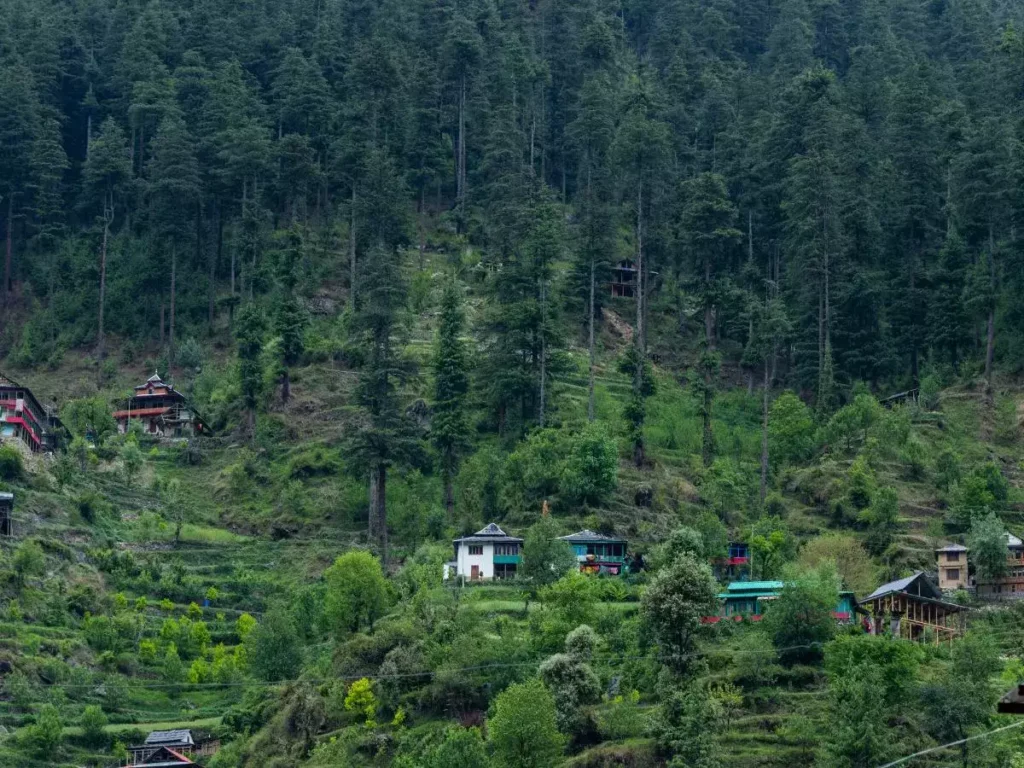
One of the most compelling reasons travellers seek refuge in places like Jibhi is the promise of escaping urban pollution and breathing genuinely fresh, clean air. Jibhi, nestled deep within the forested Tirthan Valley and away from industrial zones and heavy traffic corridors, generally lives up to this promise, offering a rejuvenating experience for the lungs and soul.
A. Understanding Jibhi’s Air Quality:
- Lack of Official Monitoring: It’s important to note that Jibhi, being a small rural village, does not have its own official, real-time Air Quality Index (AQI) monitoring station like major cities. Therefore, you won’t find specific daily AQI numbers for Jibhi readily available online through government portals (like CPCB).
- Inferred Excellent Quality: Despite the lack of specific data, the air quality in Jibhi is widely regarded as excellent for several reasons:
- Remote Location: Its location deep in the Himalayas, far from major industrial centres and densely populated urban areas, means significantly fewer sources of anthropogenic pollution.
- Abundant Forest Cover: Jibhi is surrounded by vast tracts of dense coniferous and deciduous forests (Deodar, Pine, Oak). These forests act as massive natural air filters, absorbing pollutants and releasing fresh oxygen. The air often carries the pleasant scent of pine.
- Low Population Density: The sparse population in the valley contributes to minimal pollution from domestic activities compared to cities.
- Limited Traffic: While tourism brings vehicles, the overall traffic volume is significantly lower than in urban areas or even larger hill stations. There are no traffic jams contributing to prolonged vehicle emissions.
- Absence of Polluting Industries: The Tirthan Valley is primarily an agricultural and eco-tourism zone with virtually no polluting industries.
B. Potential Considerations & Seasonal Variations:
While generally pristine, minor factors can occasionally influence local air quality:
- Wood Smoke: Like many Himalayan villages, some households in Jibhi use wood (‘tandoors’ or ‘bukharis’) for cooking and heating, especially during cold winter months. This can lead to localized smoke and particulate matter (PM2.5) concentration, particularly noticeable during early mornings or evenings in winter when the air is still. However, this is typically localized and vastly different from pervasive urban smog.
- Tourist Season Traffic: During peak tourist seasons (Summer, Autumn holidays), the increased number of vehicles on the narrow valley roads can temporarily elevate local emission levels, though likely remaining far below urban standards.
- Forest Fires: In dry seasons (late winter/early spring or pre-monsoon), occasional forest fires can occur in the wider Himalayan region. If significant fires happen nearby, smoke can drift and temporarily degrade air quality across the valley. This is an episodic event, not a constant factor.
- Road Dust: Some stretches of roads or construction activities might contribute to dust, especially in dry conditions.
Compared to almost any major Indian city or even many larger towns, the air quality in Jibhi is exceptionally good year-round. Visitors consistently report feeling the difference – the air feels lighter, cleaner, and invigorating. It’s a place where you can truly take deep breaths and feel refreshed. For travellers sensitive to air pollution or simply seeking an environment with clean air, Jibhi offers a significant and welcome respite. The generally excellent air quality is a fundamental part of its natural charm and appeal for health and well-being.
9. Beyond Jibhi: Exploring the Wider Tirthan Valley and Nearby Areas
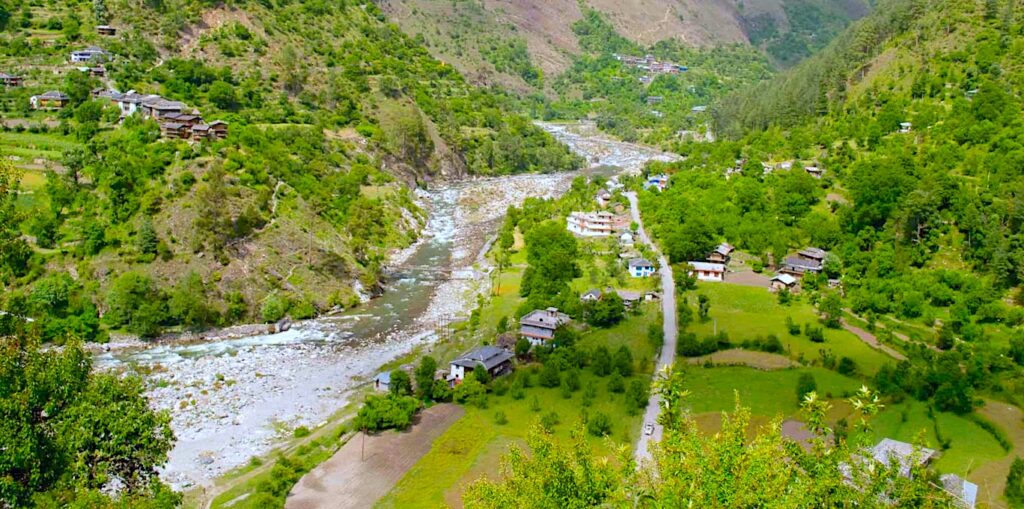
A. Gushaini:
- Location: Situated further down the valley from Jibhi (approx. 8-10 km), closer to the entrance of the Great Himalayan National Park eco-zone.
- Vibe: Similar tranquil atmosphere to Jibhi, perhaps even quieter. It’s another popular base for anglers and trekkers heading into GHNP.
- Attractions: Offers direct access to the Tirthan River, serves as the starting point for the Chhoie Waterfall trek, and is near the GHNP interpretation centre at Sai Ropa. Several charming homestays and guesthouses are located here, often right by the river.
B. Sojha (Shoja):
- Location: Situated higher up than Jibhi, on the way to Jalori Pass (approx. 5-7 km before the pass when coming from Jibhi).
- Vibe: Offers stunning, more expansive views of the snow-capped peaks due to its higher elevation (around 8,800 ft). Known for its misty mornings and serene environment.
- Attractions: Primarily known for its views and proximity to Jalori Pass. Has a few guesthouses and homestays. Can be a good alternative base if seeking higher altitude views, but colder than Jibhi.
C. Banjar Town:
- Location: The main administrative and market town of the valley, located about 8 km before Jibhi when coming from Aut.
- Vibe: More bustling than Jibhi or Gushaini, with shops, banks (ATMs), government offices, and a bus stand.
- Importance: Useful for stocking up on essentials, finding transport connections, accessing ATMs, or visiting the Fisheries Department for permits. Shringa Rishi Temple is located near Banjar (in Bagi village).
D. Great Himalayan National Park (GHNP):
- Exploration: While serious multi-day treks require permits and guides, you can explore the fringes of the eco-zone with shorter walks starting from points near Gushaini. Visit the GHNP Interpretation Centre at Sai Ropa (near Banjar/Gushaini) to learn about the park’s biodiversity, conservation efforts, and trekking regulations.
E. Sainj Valley:
- Location: A neighbouring valley, also part of the GHNP buffer zone. Accessible via a turn-off near Larji (before reaching Banjar).
- Vibe: Considered even more offbeat and less developed for tourism than Tirthan Valley. Offers pristine landscapes, traditional villages, and challenging treks within GHNP. Requires separate planning.
F. Chehni Kothi Village:
- Exploration: Beyond just trekking to the towers, spending some time walking around Chehni village offers insights into traditional architecture and village life. Remember to be respectful of residents’ privacy.
G. Contrasting with Kullu Valley:
- A day trip or onward journey towards Kullu (approx. 2-3 hours drive from Jibhi) or Manali (another 1.5 hours from Kullu) is possible. This allows you to contrast the serene, offbeat nature of Tirthan Valley with the more developed, bustling tourist hubs of the main Kullu Valley, known for apple orchards, adventure sports (paragliding, rafting in Beas river), and different cultural influences.
Exploring these nearby areas enriches your understanding of the region’s geography, culture, and varying levels of tourism development. It highlights what makes Jibhi and the Tirthan Valley a unique and precious escape.
CLICK HERE TO READ Man Behind the Character – Relu Ram
10. Conclusion: Jibhi – An Enduring Himalayan Melody
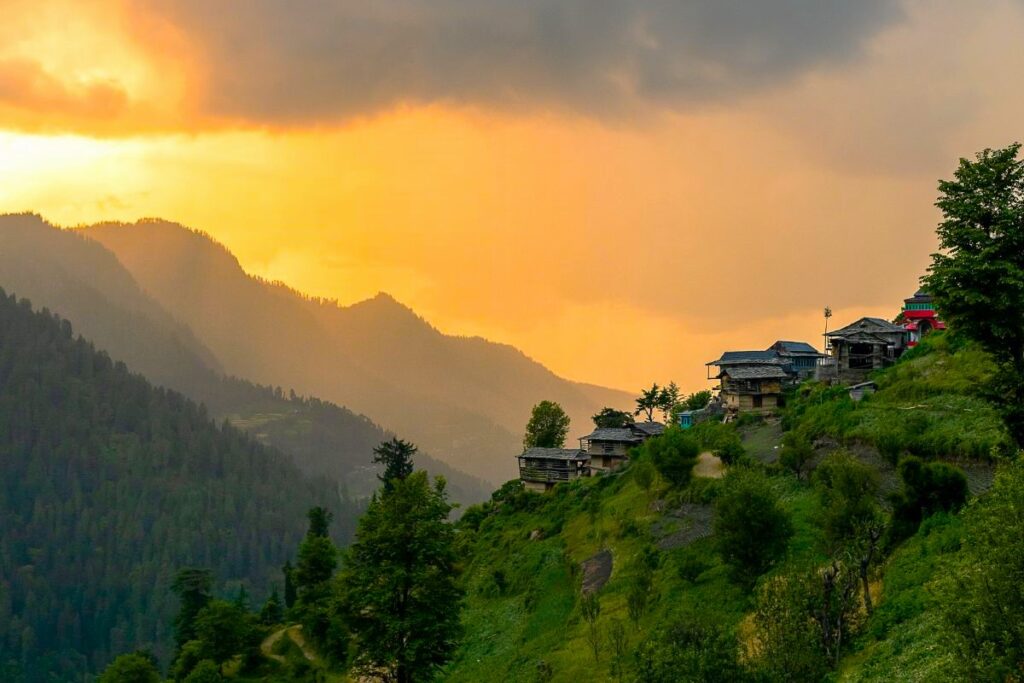
Jibhi is more than just a pin on the map of Himachal Pradesh. It’s a sanctuary for the soul, a whisper of the Himalayas that resonates long after you’ve left its embrace. In a world rushing towards homogenisation, Jibhi stands as a testament to the beauty of simplicity, the richness of authentic culture, and the profound power of untouched nature.
From the crystal-clear melody of the Tirthan River to the ancient silence of the Deodar forests, from the architectural wisdom of Kath-Kuni homes to the warm smiles of its residents, Jibhi offers an experience that is both grounding and uplifting. It’s a place where adventure walks hand-in-hand with tranquility – whether you’re trekking to the mystical Serolsar Lake, casting a line for trout in the gurgling river, marvelling at the resilience of Chehni Kothi, or simply sipping tea on a homestay balcony overlooking the valley.
This extensive guide has aimed to equip you with all the knowledge needed to plan your 2025 journey to this Himalayan paradise. We’ve explored its natural wonders, delved into its cultural heart, tasted its unique flavours, navigated accommodation choices, and detailed the practicalities of travel.
But remember, the true magic of Jibhi cannot be fully captured in words or pictures. It lies in the crispness of the morning air, the taste of home-cooked Siddu shared with newfound friends, the breathtaking panorama from Jalori Pass, the quiet rustle of leaves on a forest trail, and the overwhelming sense of peace that settles within you.
So, heed the call of the mountains. Plan your escape to Jibhi. Come with an open heart, a curious mind, and a spirit of responsible exploration. Discover the trails, listen to the stories, connect with the people, and allow the serene melody of Jibhi to rejuvenate your spirit. This hidden gem of Himachal Pradesh awaits, promising not just a holiday, but a journey back to nature, and perhaps, back to yourself.
Juley!
Jai Hindi
Blog By: Team Unseen Himachal

